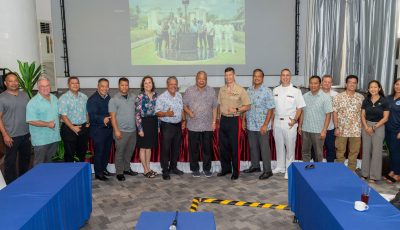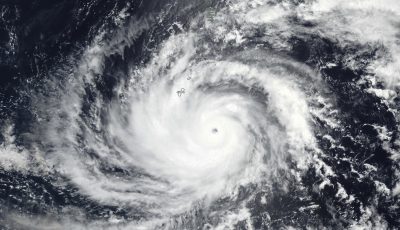A very brief history of military buildups in the CNMI
Military buildups, as well as military downsizing, have occurred several times in the history of the Northern Mariana Islands. The current buildup proposal, however, is clearly the most unique.
The first foreign military garrison in the Marianas was established by Spain in the 1680s, primarily to defend the Spanish colony from Chamorros who refused to accept Spanish culture and customs. The military population of the Marianas remained relatively static until the Marianas colony was designated a federal penal colony in the mid-1800s. Large numbers of convicted felons and political revolutionaries were sent to Guam and Saipan, along with their military guards. In the aftermath of the American capture and occupation of Guam and the Philippines in 1898, a large detachment of Filipino soldiers loyal to Spain and their families were housed on Saipan, causing considerable overcrowding and related social problems.
Germany never established a military outpost in the Northern Marianas after purchasing Spanish-Micronesia following America’s war with Spain in 1898.
However, when the Northern Marianas was captured from Germany by the Japanese Imperial Navy in 1914 at the outset of World War I, they established a naval civil administration for the Northern Mariana Islands, not significantly different from the U.S. Naval Government of Guam, with naval officers in charge of civil affairs. These troops were withdrawn after a civilian bureau was created in Tokyo to manage Japan’s new colonial territory under a Class C mandate from the League of Nations in 1922. No major military activities occurred in the Japanese Northern Mariana Islands until 1937. After Japan had launched its war in Southern China and the last treaties between the United States and Japan expired, the Japanese Imperial Navy began constructing airbases. Along with them came contractors and their laborers, swelling the population in 1938 and 1939. By 1941 Pagan, Saipan, Tinian, and Rota were well-developed military installations, employing thousands of troops and civilians. After the United States captured the Gilbert and Marshall Islands from Japan in the fall and spring of 1943, large numbers of veteran Japanese troops were relocated from China and Korea to the Northern Marianas, forcing the local population from their homes.
The American capture of the Mariana Islands in June, July, and August of 1944 eliminated Japanese military forces. American military construction on Saipan and Tinian was massive; the surviving local population of Saipan and Tinian was relocated to stockades for the duration of the war. At the end of the war, the islands were demobilized (downsized). By about 1951, the military was gone, except for a small administrative detachment.
The next military development was small. An organization known as the Naval Technical Training Unit was located on Saipan in 1952, the islands were returned to U.S. naval government for administration and closed to outside commerce and transportation until it was closed in 1962.
The next U.S. military buildup in the Northern Marianas was proposed in 1972, but never came to fruition. President Nixon’s 1969 decision to re-open relations with the People’s Republic of China required an end to the Vietnam War. To maintain the integrity of the U.S.-Japan security alliance—the backbone of peace in the Pacific since World War II—Nixon agreed to return Iwo Jima and Okinawa to Japan. This required a fallback base for troops stationed in Okinawa. To ensure the new facility would be located on “sovereign American soil,” the U.S. offered citizenship and maximum self-government under the U.S constitution to the people of the Northern Marianas in return for a lease on two-thirds of Tinian. B-52s would be relocated to North Field, with Marine training ranges in the south Before the Covenant was signed, however, Nixon pulled out of Vietnam. Regardless, the CNMI was born, Congress found no reason to fund the construction of the Tinian base, and Tinian remained undeveloped.
A new proposal for military buildup in the CNMI was not initiated until after the 2006 renewal of the U.S.-Japan alliance. The first was the Joint Guam Program Office plan, which produced a Programmatic Agreement on historic sites and a Record of Decision. However, Congress demanded a Pacific-wide lay-down for the Marine Corps before authorizing the development.
Marine Forces Pacific subsequently submitted a new plan based on a study of deficiencies in Marine Corps training in the Pacific. According to the recently released Draft Environmental Impact Study for the Commonwealth Joint Military Training plan, conducted within the requirements stipulated in the National Environmental Policy Act, MarForPac would maximize use of DoD leased lands on Tinian for a variety of training purposes. Port support requirements dictate the need to acquire additional leased lands on Tinian. MarForPac would also acquire a lease on Pagan Island for amphibious training exercises. The CJMT Record of Decision is expected in mid-2016.
What makes this buildup proposal unique from all others in Marianas history is the CNMI Covenant. Thanks to both the American and Northern Marianas negotiators, the Covenant requires DoD to request an authorization from Congress if they want to lease additional public land in the CNMI. They must present an argument justifying why they cannot perform the necessary training within the confines of their existing leased lands on Tinian, or use another island. Perhaps, the biggest question will be: What will the lease cost?
Two factors need to be taken into consideration when studying the plan from a congressional perspective: Japan is committed to paying a large percentage of the construction on Tinian and Pagan; and, recent Chinese military incursions in the South China Sea have raised significant concerns in Japan, Korea, and the Philippines—all American allies.
Those interested in learning more about this issue are encouraged to read the two volumes of history written by Howard Willens and his wife, Deanne Seimer: National Security and Self-Determination: United States Policy in Micronesia; 1961-1972, and An Honorable Accord: The Covenant between the Northern Mariana Islands and the United States, as well as Henry Kissinger’s excellent work, On China.



























